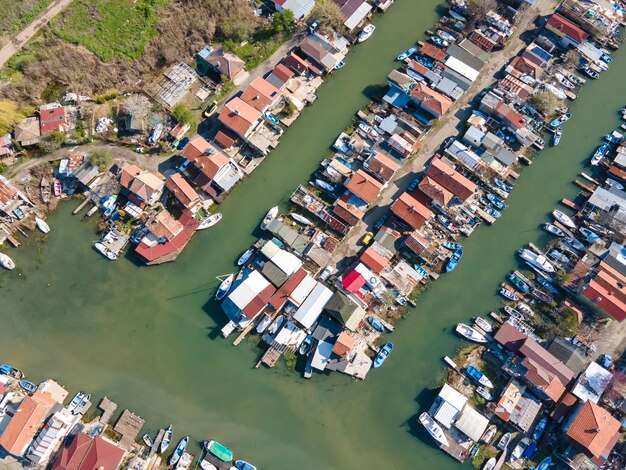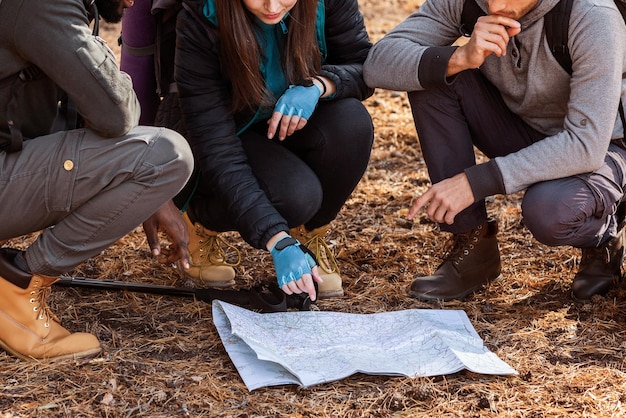US Government Disaster Response: Resources and Procedures

The US government responds to natural disasters through a multi-agency approach led by FEMA, offering resources like financial aid, temporary housing, and community support to affected individuals and areas.
Natural disasters can strike at any time, leaving devastation and chaos in their wake. Understanding how the US government responds to natural disasters and what resources are available can help communities prepare and recover when the unexpected occurs.
Understanding the Federal Disaster Response Framework
The federal government has a comprehensive framework in place to respond to natural disasters. This framework involves multiple agencies coordinating their efforts to provide assistance to affected areas.
The primary agency responsible for coordinating federal disaster response is the Federal Emergency Management Agency (FEMA). FEMA works in collaboration with other federal, state, and local agencies, as well as non-profit organizations, to ensure an effective and coordinated response.
Key Agencies Involved in Disaster Response
Several federal agencies play crucial roles in disaster response, each with specific responsibilities and areas of expertise.
- FEMA (Federal Emergency Management Agency): Leads and coordinates federal disaster response efforts.
- National Guard: Provides support for search and rescue operations, security, and transportation.
- US Army Corps of Engineers: Assists with infrastructure repairs, debris removal, and temporary housing.
- Department of Health and Human Services (HHS): Offers medical assistance, public health support, and mental health services.
The effectiveness of the federal disaster response framework relies on strong communication and coordination among these agencies.

In conclusion, the federal disaster response framework is a complex but essential system designed to provide aid and support to communities affected by natural disasters.
The Role of FEMA in Disaster Management
FEMA is at the forefront of the US government’s disaster management efforts. The agency plays a multifaceted role, from preparedness and mitigation to response and recovery.
FEMA’s responsibilities include assessing damage, providing financial assistance, coordinating resources, and supporting state and local governments in their response efforts.
How FEMA Assesses Damage and Needs
Accurate damage assessment is crucial for determining the scope of the disaster and the needs of affected communities.
- Initial Damage Assessment: Conducted immediately after the disaster to identify the most urgent needs.
- Preliminary Damage Assessment (PDA): A more detailed evaluation to determine the extent of damage and potential federal assistance.
- Joint Field Office (JFO): Serves as a central hub for coordinating federal, state, and local response efforts.
These assessments help FEMA allocate resources effectively and prioritize areas most in need of assistance.
FEMA works closely with state and local officials to ensure that resources are deployed effectively and efficiently.
Types of Federal Assistance Available After a Disaster
The federal government provides various forms of assistance to individuals, families, and communities affected by natural disasters.
These include individual assistance programs, public assistance programs, and hazard mitigation programs.
Individual Assistance Programs
These programs offer direct support to individuals and families to help them recover from the disaster.
- Financial Assistance: Grants to help cover expenses such as housing, medical care, and personal property losses.
- Temporary Housing Assistance: Provides temporary housing options for those displaced from their homes.
- Disaster Unemployment Assistance: Provides benefits to individuals who lost their jobs due to the disaster.
These programs are designed to provide immediate relief and support to individuals and families during their recovery journey.

In summary, the individual assistance programs are critical for helping individuals and families regain stability and rebuild their lives after a disaster.
Navigating the Disaster Assistance Application Process
Applying for disaster assistance can be a complex process. Understanding the steps involved can help individuals navigate the system more effectively.
The application process typically involves registering with FEMA, providing documentation of damage and losses, and attending interviews or inspections.
Tips for a Successful Application
Here are some tips to help you through the disaster assistance application process:
- Register with FEMA: Start by registering online or by phone.
- Document Your Losses: Gather photos, receipts, and other documents to support your claim.
- Be Patient: The application process can take time, so be prepared to follow up and provide additional information as needed.
By following these tips, you can increase your chances of receiving the assistance you need to recover from the disaster.
Navigating the application process may seem daunting, but with preparation and persistence, you can access the resources available to support your recovery.
Long-Term Recovery Efforts and Community Resilience
Recovery from a natural disaster is not just about immediate relief; it also involves long-term efforts to rebuild communities and enhance resilience.
These efforts include rebuilding infrastructure, restoring public services, and providing ongoing support to affected residents.
Building More Resilient Communities
Investing in resilience can help communities better withstand future disasters.
- Infrastructure Improvements: Strengthening infrastructure to better withstand natural hazards.
- Community Planning: Developing comprehensive disaster preparedness and recovery plans.
- Education and Training: Equipping residents with the knowledge and skills to respond effectively to disasters.
By prioritizing resilience, communities can minimize the impact of future disasters and recover more quickly.
Building community resilience is an ongoing process that requires collaboration, investment, and a commitment to preparedness.
The Impact of Climate Change on Disaster Response
Climate change is exacerbating the frequency and intensity of natural disasters, posing significant challenges for disaster response efforts.
Rising sea levels, extreme weather events, and increased wildfires are straining existing resources and requiring innovative approaches to disaster management.
Adapting to a Changing Climate
Governments and communities must adapt to the changing climate by:
- Investing in Mitigation: Reducing greenhouse gas emissions to slow the pace of climate change.
- Enhancing Preparedness: Developing strategies to prepare for and respond to more frequent and intense disasters.
- Building Resilience: Strengthening communities to withstand the impacts of climate change.
Adapting to climate change requires a proactive and collaborative approach.
Addressing climate change is critical for protecting communities from the growing threat of natural disasters.
| Key Point | Brief Description |
|---|---|
| 🏠 FEMA Assistance | Provides financial and housing aid post-disaster. |
| 🛡️ Community Resilience | Focuses on infrastructure and preparedness. |
| 🌍 Climate Change Impact | Exacerbates disaster frequency and intensity. |
| 🤝 Multi-Agency Coordination | Collaboration among agencies for effective response. |
Frequently Asked Questions
▼
FEMA leads and coordinates the federal government’s disaster response efforts, working with other agencies to provide assistance to affected areas and individuals.
▼
FEMA provides financial aid for housing, medical care, and personal property losses, as well as temporary housing assistance and disaster unemployment benefits.
▼
Communities can enhance resilience by improving infrastructure, developing comprehensive disaster preparedness plans, and educating residents on disaster response strategies.
▼
Climate change exacerbates the frequency and intensity of natural disasters, straining existing resources and requiring innovative approaches to disaster management and preparedness.
▼
The first step is to ensure your immediate safety and then register with FEMA to begin the process of applying for disaster assistance and accessing available resources.
Conclusion
The US government’s response to natural disasters involves a complex and coordinated effort across multiple agencies, led by FEMA. Understanding the resources available and the processes involved can empower individuals and communities to better prepare for and recover from these devastating events, ultimately fostering resilience and long-term recovery.





